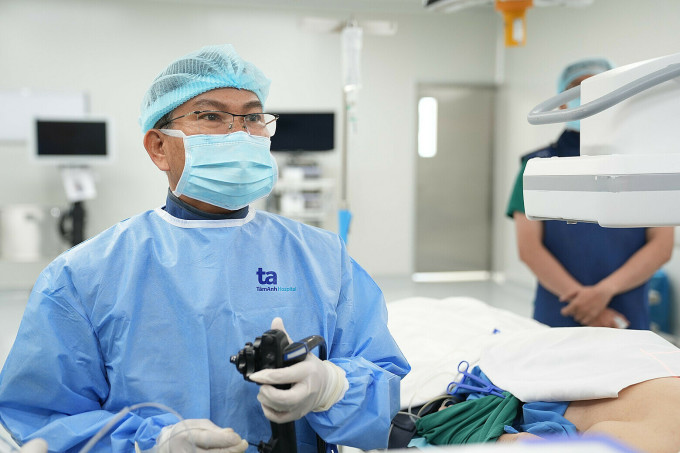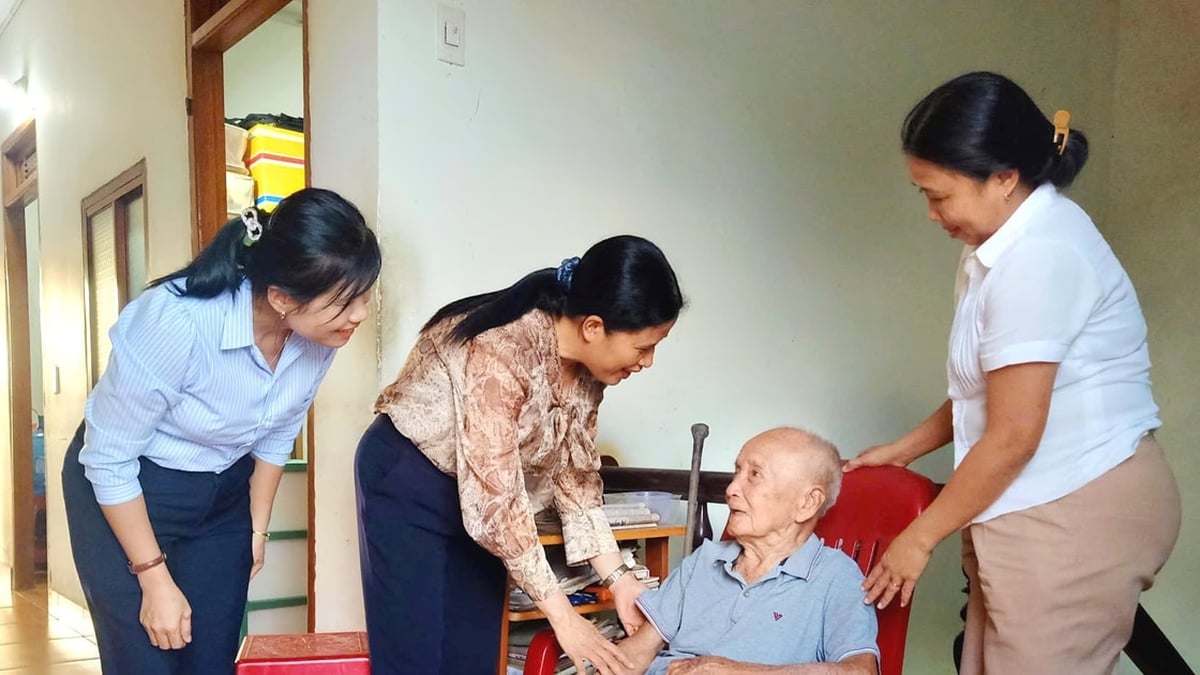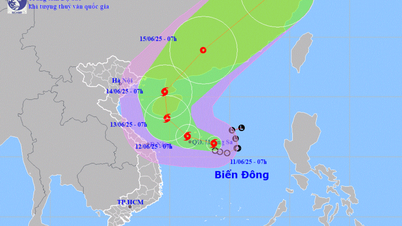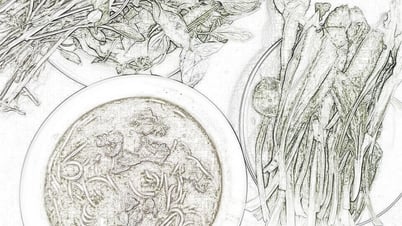Ho Chi Minh City Ms. Pho, 56 years old, has had difficulty eating and swallowing for 10 years. The doctor diagnosed her with a diaphragm that narrowed the esophagus.
Ms. Nguyen Thi Pho (living in Binh Dinh) came to Tam Anh General Hospital in Ho Chi Minh City for examination due to her weak health and difficulty swallowing. For the past 10 years, she has had to eat small amounts, and vomit when she eats a lot, each meal lasting an hour. She also had to cut pills into three pieces to swallow.
She went to many places for examination, the doctor diagnosed esophageal stenosis. After dilating the esophagus for a few months, the stenosis recurred, recently it got worse, she lost weight rapidly.
On September 17, Dr. Pham Huu Tung, Deputy Director of the Center for Endoscopy and Endoscopic Surgery of the Digestive System, ordered the patient to undergo an endoscopy and X-ray to check the esophagus. The results showed that the patient had an esophageal diaphragm (esophageal web), the narrowed esophageal lumen was only about 0.5 cm (normal people are 1.5-2 cm).
This is a condition where a thin membrane structure obstructs the passage of food in the esophagus, causing the patient to choke and have difficulty eating and drinking. Food gets stuck and cannot go down to the stomach, causing discomfort, vomiting, heartburn, hiccups, coughing or difficulty breathing. Patients with prolonged difficulty eating and drinking lead to weight loss, malnutrition, and serious health effects.

Doctor Tung performs endoscopy on a patient. Photo: Provided by the hospital
The doctor ordered an endoscopic diaphragm resection to widen the esophagus. After 15 minutes of surgery, the patient was awake, no longer had symptoms of dysphagia, and could drink milk and eat thin porridge. A day later, she was able to eat bread and was discharged from the hospital after two days.
According to Dr. Tung, esophageal diaphragm accounts for 5-15% of cases of dysphagia. Dysphagia is a common symptom in patients with esophageal cancer, benign stenosis due to many different causes (inflammation, ulcers, burns...), esophageal motility disorders or external injuries compressing the esophagus.

Ms. Pho is healthier and no longer has difficulty swallowing after surgery. Photo: Provided by the hospital
Symptoms of the disease are dysphagia, painful swallowing, and difficulty swallowing. The severity of symptoms depends on the degree of narrowing of the diaphragm. The specific cause of the disease has not been determined. Some risk factors include congenital, iron deficiency anemia, and chronic damage due to gastroesophageal reflux. Accompanying symptoms are often ulcers on both sides of the lips and glossitis.
Doctor Huu Tung recommends that people with symptoms of dysphagia, difficulty swallowing, or painful swallowing should go to a qualified medical facility for examination and endoscopy to detect and treat early esophageal lesions. This will help patients avoid serious consequences caused by these diseases.
Quyen Phan
| Readers ask questions about digestive diseases here for doctors to answer |
Source link






















![[Photo] Gia Lai provincial leaders offer flowers at Uncle Ho's Monument with the ethnic groups of the Central Highlands](https://vphoto.vietnam.vn/thumb/1200x675/vietnam/resource/IMAGE/2025/7/9/196438801da24b3cb6158d0501984818)

















































































Comment (0)